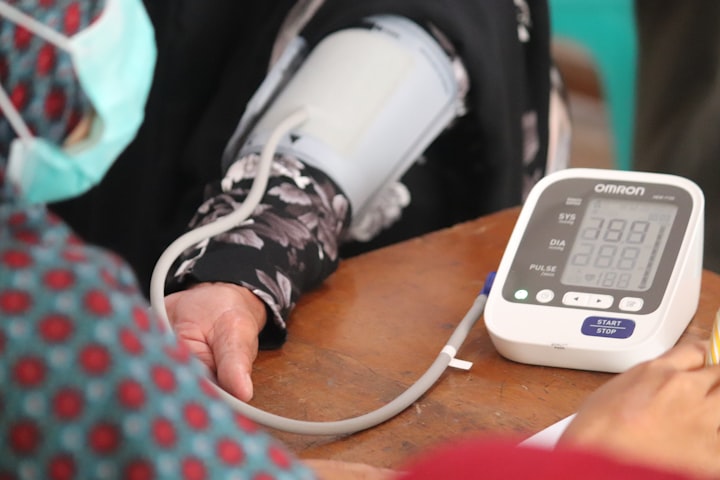The DASH Diet: A Comprehensive Review of the Dietary Approaches to Stop Hypertension
Learn about the benefits, limitations, and tips for incorporating the DASH diet into your lifestyle

The Dietary Approaches to Stop Hypertension (DASH) diet is a dietary pattern designed to help lower blood pressure and promote overall health. Developed by the National Heart, Lung, and Blood Institute (NHLBI), the DASH diet emphasizes whole, nutrient-dense foods such as fruits, vegetables, whole grains, lean proteins, and low-fat dairy products while limiting saturated fats, trans fats, and sodium.
The DASH diet has been extensively studied and has been shown to improve blood pressure, reduce the risk of heart disease, stroke, and other chronic diseases, and promote weight loss. In this comprehensive review, we will discuss the benefits, limitations, and tips for incorporating the DASH diet into your lifestyle.
Benefits of the DASH Diet:
Lower Blood Pressure: The DASH diet has been shown to be effective in lowering blood pressure in both people with hypertension and those with normal blood pressure. This is due to the emphasis on nutrient-dense, low-sodium foods such as fruits, vegetables, and whole grains.
Reduce the Risk of Heart Disease: The DASH diet has been associated with a lower risk of heart disease and stroke, as it promotes a healthy balance of nutrients and limits foods high in saturated fats and trans fats.
Promote Weight Loss: The DASH diet is also effective for weight loss, as it emphasizes whole, nutrient-dense foods that are low in calories and high in fiber.
Improve Overall Health: The DASH diet is a well-balanced, nutrient-dense dietary pattern that promotes overall health and well-being. It has been associated with a lower risk of chronic diseases such as type 2 diabetes, certain cancers, and kidney disease.
Limitations of the DASH Diet:
Sodium Restriction: The DASH diet emphasizes a low-sodium intake, which may be challenging for some people. However, reducing sodium intake is an important component of the diet for reducing blood pressure and promoting overall health.
Nutrient Deficiencies: The DASH diet may be deficient in certain nutrients such as calcium, vitamin D, and vitamin B12. It's important to make sure you're getting enough of these nutrients through food or supplements.
Cost and Availability of Foods: Some people may find the cost and availability of foods on the DASH diet to be a barrier to adoption. However, there are many affordable options such as frozen fruits and vegetables or canned beans that can be incorporated into the diet.
Tips for Incorporating the DASH Diet:
Start with Small Changes: Like any dietary pattern, it's important to start with small changes to make the transition easier. Try incorporating one or two DASH-friendly foods into your meals each day, such as adding more vegetables to your plate or switching to whole grain bread.
Emphasize Fruits and Vegetables: Fruits and vegetables should be the foundation of your meals on the DASH diet. Try to incorporate a variety of colorful fruits and vegetables into your meals each day.
Choose Whole Grains: Whole grains such as brown rice, quinoa, and whole wheat pasta are important components of the DASH diet. Swap out refined grains for whole grains in your meals.
Limit Saturated and Trans Fats: Saturated and trans fats should be limited on the DASH diet. Choose lean proteins such as chicken, fish, and beans, and use healthy fats such as olive oil or avocado oil for cooking.
Reduce Sodium Intake: The DASH diet emphasizes a low-sodium intake, so it's important to be mindful of the amount of salt you're consuming. Choose low-sodium options when available and avoid adding salt to your meals. Try using herbs and spices to flavor your food instead.
Incorporate Low-Fat Dairy: The DASH diet encourages the consumption of low-fat dairy products such as milk, yogurt, and cheese. Choose low-fat or fat-free options to keep saturated fat intake low.
Make Smart Snack Choices: Snacking is a common part of many people's diets, but it can be challenging to find healthy options. Incorporate DASH-friendly snacks such as fresh fruit, raw vegetables, or air-popped popcorn into your routine.
Conclusion:
The DASH diet is a well-balanced, nutrient-dense dietary pattern that has been shown to improve blood pressure, reduce the risk of chronic diseases, and promote weight loss. While there may be some limitations to the diet, such as the restriction of sodium and potential nutrient deficiencies, there are many tips and strategies for incorporating the DASH diet into your lifestyle.
Starting with small changes, emphasizing fruits and vegetables, choosing whole grains, limiting saturated and trans fats, reducing sodium intake, incorporating low-fat dairy, and making smart snack choices are all effective ways to adopt the DASH diet. With its numerous health benefits, the DASH diet is a great option for those looking to improve their overall health and well-being.
About the Creator
Aron38
short story lover
Enjoyed the story? Support the Creator.
Subscribe for free to receive all their stories in your feed. You could also pledge your support or give them a one-off tip, letting them know you appreciate their work.






Comments
There are no comments for this story
Be the first to respond and start the conversation.